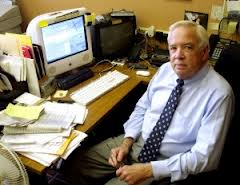I have seen several oral histories of the Kick 6, so I thought I would quickly jot down my memories of that night. Add your own as comments, if you’d like.
I was at the top of Section 44 with a friend, Christie, who was at her first Auburn football game ever. We had seen Sammie Coates catch the pop-pass and run it in, and we had booed with indignation when the officials restored one second to the clock.
I watched the attempted field goal, and from the North end zone stands, I had no idea that Chris Davis was back there. Then I realized that he had caught the ball and started running it out.
My first thought was, “How quaint. This player thinks he actually can do something fielding the field goal, and he is running fast too.” I honestly thought he would be tackled and we would head to overtime.
Davis cut to the sideline, along with everyone else on the field, and when Cody Mandell and Dee Ford crossed in front of Davis, it was like a curtain opening and revealing Davis running toward the end zone with only Auburn players close.
As that curtain opened, it unleashed a roar as a huge wave cascading from all over Jordan-Hare, as I had never heard before, and suddenly we were all going crazy — cheering, hugging, screaming.
Two weeks before, after the “Prayer at Jordan-Hare,” I had tweeted, “I cannot believe what I have just seen.” So I tweeted, “Again, I cannot believe what I have just seen.”
Our side of the stadium was not allowed on the field, so we got gridlocked in the stands for a while. Like Mike Szvetitz quoted in the Opelika-Auburn News, I could not believe that they played “Celebration.” A 1980 song? Really?
For the next couple of days, I heard from relatives who did not even care about football (or so I thought) telling me they had seen the kick and they thought it was great. My favorite was a phone message from my Uncle Mario, age 93, who would pass away the following summer.
I realized this was a moment shared not only with the college football world, but also sports fans across the country, a once-in-a-lifetime play. Those of us who were there became fortunate witnesses to history, and were privileged to share in it.
I still get choked up seeing Auburn fans who were watching at home or in a restaurant or bar, realizing that the moment was theirs as much as ours in the stadium.
The next couple of weeks, Auburn was like Disneyland, the happiest place on Earth. I remember seeing a campus tour pass in front of Tichenor Hall that next week, and everyone was gazing around them in wonder. All that was needed was cartoon birds carrying “Welcome to Auburn!” banners and tour guides dressed as Snow White.
I realize we are mocked, often from another side of the state, for continuing to celebrate this moment. But that’s what sport is about: the opportunity to share in such moments, and know that we were there, and that it really did happen.

